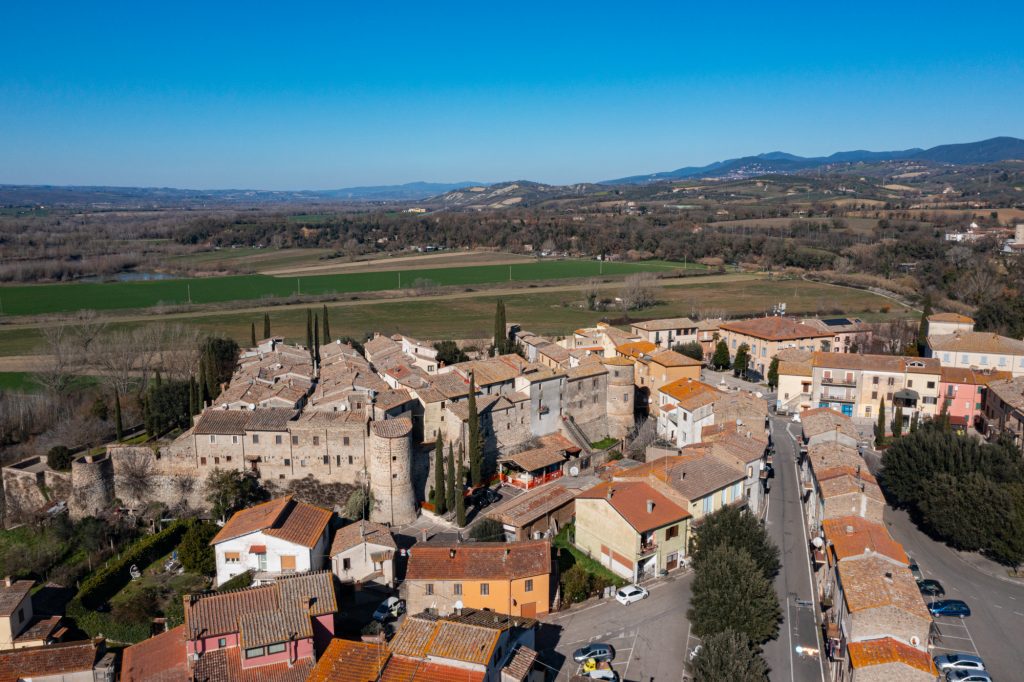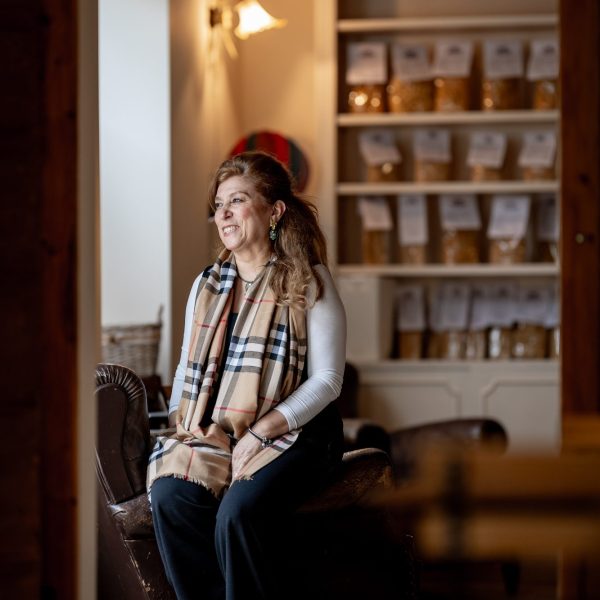Attigliano (Tr)
History
The territory where the small village of Attigliano now stands was inhabited since ancient times. There are many testimonies: in the interior areas, especially in the locality of “Malvicino”, remains of some tombs carved into the tufa and pottery demonstrate the presence of Etruscan peoples.
Its most documented history comes from the Imperial Age.
Its foundation likely dates back to the descent of Otto III and his Count Offredo around the 10th century when the Castle was erected with its five defense towers and the pentagonal tower.
It had a river port in the area called “Portovecchio”, near the current cemetery. Attigliano was indeed a castle whose walls were close to the Tiber, which then, due to a flood, diverted its course away from the settlement.
A romantic tradition suggests that the name of the village is linked to the walks towards the hill of lime trees “ad tilias” (to the lime trees) that some Romans used to take to escape the summer heat of the villas that were located downstream.
Address: Attigliano, 05012 Attigliano TR
Phone: +39 0744 994224
During the Renaissance, first the Alviano family and then the Farnese family enriched the village with new works, including the Baronial Palace, which over time incorporated the pentagonal tower itself and the Church of San Lorenzo.
Many of these historical traces have been lost. Of the old castle, only stretches of walls, six towers, and the 15th-century entrance portal, recently restored, remain.
The municipal territory of Amelia consists of 7 hamlets, each with its own particular charm: Collicello, Fornole, Foce, Macchie, Montecampano, Porchiano del Monte, and Sanbucetole.

Culture
Entering through the Castle Gate, the Clock Tower, decorated with a contemporary mural, is what remains of the complex of the Palazzo Baronale, which was demolished in 1964 due to reasons related to its instability.
To the left of the tower is the Piazza della Rocca, where a splendid amphitheater called Anfiteatro hosts events throughout the year. At the end, solitary, stand six columns that recall the space of what was the Church of San Lorenzo, now rebuilt outside the walls after the demolition of 1964. The ancient ciborium and baptismal font are preserved in the new building, which also houses important works by Aligi Sassu.
The Fountain of the Dolphins was sculpted by Ramperti da Amelia in 1885, with the dual purpose of providing water supply to the population and embellishing the space in front. The materials used for this work come from the old quarry of S. Eugenia.
Nature
To enjoy the beauty of the village and the surrounding area, two loop trails can be taken:
Water Ring Circuit
The Water Ring Circuit, about 7.5 km long, starts from Piazza Vittorio Emanuele II, reaches the Fountain of Sant’Eugenia, follows the Tiber River, and returns to Attigliano.
The Piantana Ring Circuit
About 8 km long, starting from the historic center, it reaches the Church of Madonna delle Grazie, then passes by an abandoned farmhouse with a furnace probably built on a Roman structure. It passes next to the old Pontifical Customs House and then descends back to the village.




